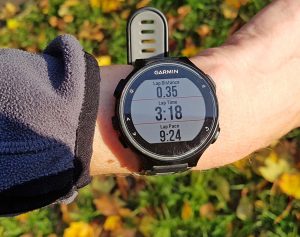Triathlon gadgets – are they an expensive (and in some cases, intimidating) waste of money or a game-changer in your triathlon training?
Let’s look at arguments for and against and how gadgets can help – and hinder – your triathlon experience.
As a triathlete and triathlon coach, I’ve found over the years that men tend to get more into the triathlon gadgets and the data they provide than the women I coach and train with. Are we doing ourselves a disservice?
First of all, what counts as a triathlon ‘gadget’?
For the purposes of this blog, anything that involves technology and is a bit of an “extra” is a gadget. For example, a bike isn’t a gadget, but a power metre is. Over our next few blogs, we’re going to look at three different pieces of triathlon gadgetry to help you decide whether to splurge or save and which pieces of tech are right for you and your training style.
Triathlon Gadgets – The Fancy Watch
the Pros:
Last year I bought a Garmin Forerunner 735XT for an ultra-running race. I wanted mapping and timing functionalities that my super-cheap watch couldn’t provide.
Yes, it took the fact that I was running farther than a marathon to make me feel that I deserved to spend the money. But I’m (mostly) glad that I did. I struggle with heart rate monitor straps. My skin is prone to chafing and my lungs are prone to freaking out when a strap is squeezing them. So today’s watches with built-in heart rate offer more comfort with less faff.
With a bit of online research, I figured out functionalities that allowed me to download a route map. I also used the run-walk function to help pace me from the start. Even as someone fairly disinterested in stats, I like looking back and seeing how my pace and heart rate changes through races and training sessions.
In everyday life, the watch looks pretty cool. It is way less clunky than previous Garmin models and it counts my steps, so I’m inspired to get a lot of walking in.
the Cons:
It’s easy to rely on watches too much. I once had a coach say that they wanted to send me out on my first Ironman without a watch. Whaaaat? At the time I didn’t have a fancy watch, but I did love my simple watch that could tell me EXACTLY how I was doing AT ALL TIMES. And that was the problem for my coach. He feared that if my watch showed that I was doing better than expected, I would push too hard and blow up. If the watch showed that I wasn’t on target, he feared that I would panic and my race would suffer.
Watches can provide a crutch in that we never learn to run (or swim or bike) by feel. In addition the constant glancing at a watch can detract from the pure race experience.
 Garmins in particular are infamous for requiring a fair share of googling to actually figure out how to use their full range of functions. Once you play with it a bit, they are actually very easy to operate.
Garmins in particular are infamous for requiring a fair share of googling to actually figure out how to use their full range of functions. Once you play with it a bit, they are actually very easy to operate.
However, if you tend to have a fear of all things tech-y, a basic watch with a timer and splits functionality may be the best bet for you.
Stay tuned for our upcoming blogs about other triathlon gadgets… are they friends or foes?
Happy Training!
For more training advice from our in-house coach Kristin, visit her blog here.

Comments are closed.